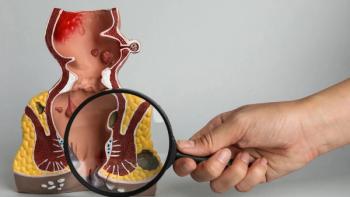
Too Few Women With Breast or Ovarian Cancer Undergo Genetic Testing
Women with ovarian or breast cancer often don’t receive the genetic testing they need in order to devise the best treatment plans, a new study says.
Women with ovarian or breast cancer often don’t receive the genetic testing they need in order to devise the best treatment plans, a new study says.
Testing is recommended for all women with ovarian cancer and many women with breast cancer. But 75 percent women who are eligible for the testing never even discussed it with a health care provider, according to a study that was recently published in the Journal of Clinical Oncology.
There are about 3.8 million women in the United States who are living with a history of breast and/or ovarian cancer.
“Identifying which of these patients carries heritable mutations can direct cancer treatment and alter surgical decision-making,” the authors wrote.
Pooled, cross-sectional data from three cancer control modules of the National Health Interview Survey included in-person surveys from 47,218 women. Of those women, 2.7 percent had breast cancer, though only 15.3 percent of that population underwent genetic testing. Four percent of the overall population had ovarian cancer, and the percentage of these women who had genetic testing was even lower — 10.5 percent.
As the researchers looked back at the women’s time of diagnosis, they found that women who found out about their disease five, 10 or 20 years ago were even less likely to undergo genetic testing, as there was a lack of awareness and availability.
According to the study, all women who are diagnosed with ovarian cancer should be referred to genetic testing. When it comes to patients with breast cancer, health care providers should ask a few questions, regarding the person’s age at diagnosis, and if they have any first-degree relatives who were diagnosed with either breast or ovarian cancer, and what their age of diagnosis was. If they and/or a close family member was diagnosed at a younger age, they should probably be referred for genetic testing.
These standards could identify 1 million people who are eligible for genetic testing. Not to mention, this has been the recommendation from the National Comprehensive Cancer Network (NCCN) for several years.
“Although rates of testing are low across the entire study, ovarian cancer seems to be a particularly unrecognized indication for genetic testing,” the authors wrote. “NCCN guidelines have recommended genetic testing for patients with a history of ovarian cancer since at least 2010.”
But getting patients into genetic testing must first start with a conversation. The authors of the study found that 75 of every 100 eligible patients who had a history of either breast or ovarian cancer never even had a discussion with their health care provider about genetic testing. Other patients have talked with their providers about their family cancer history but have not been advised for genetic testing, and some may have been advised but never actually followed through and went for the testing.
Besides lack of awareness and that crucial patient-doctor conversation, another leading reason many patients do not undergo genetic testing is the lack of providers in their area. A 2011 survey that only 25 percent of genetic counselors specialize in cancer, leaving many patients with little, if any, options.
Finally, genetic testing not only affects those who already have breast or ovarian cancer, but it can also have major implications for family members who might be at risk of getting mutation-driven cancer.
“The ultimate impact of genetic testing is to identify all individuals at high-risk for cancer before they are affected to maximize opportunity for prevention and early detection,” the authors wrote. “This effort will be challenging if we cannot first identify affected individuals with hereditary cancer gene mutations.”




